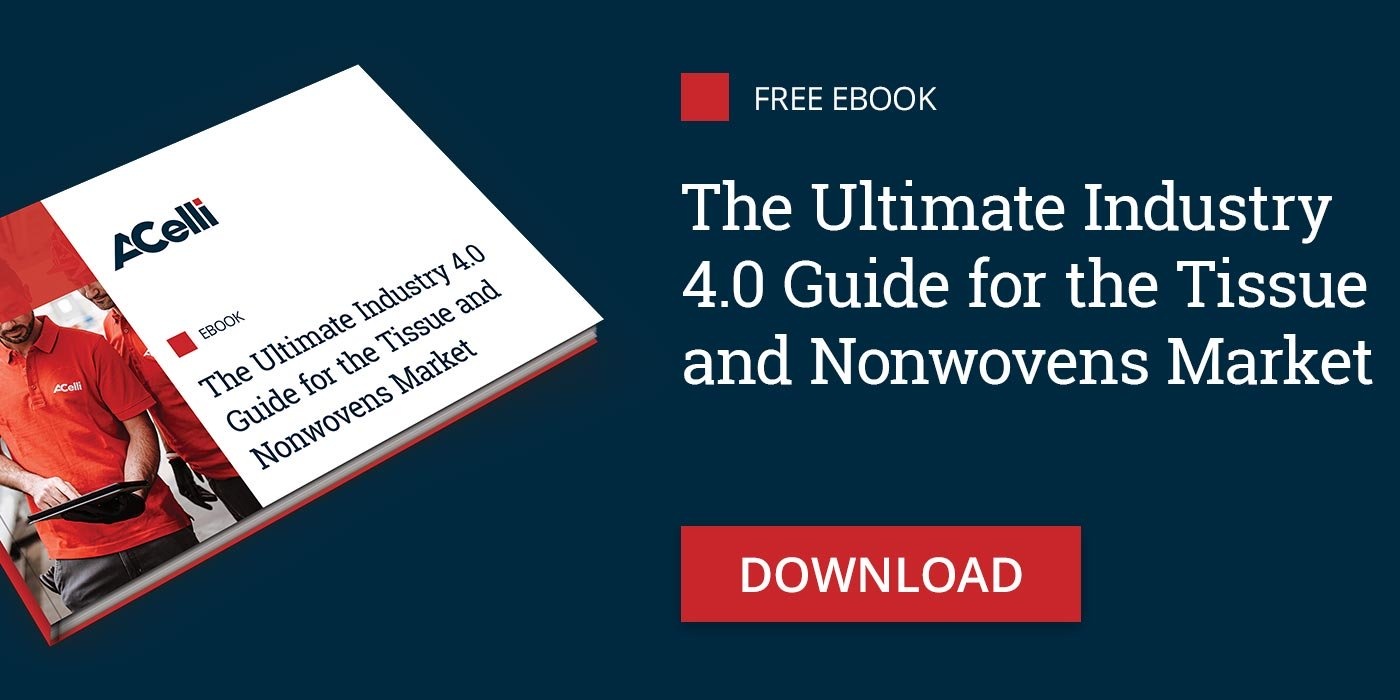As the tissue and nonwovens industry becomes increasingly computerized, more and more data are accessible.
This Big Data, as it has been termed, is extensive, increasingly complex and often proprietary, requiring solid data governance to ensure the right policies, processes, standards, and metrics are in place to manage and protect that data. In other words, data are more of an asset than they ever have been.
With that in mind, what follows are the three Ps of data governance that tissue and nonwovens need to adopt with their Industry 4.0 systems.
1. Processing
In a tissue and nonwovens mill, data are streaming in from hundreds or even thousands of sensors on a continuous basis. These data reveals everything about plant operations, from a bird’s eye view right down to a single reading from a small machine. If these data are processed the right way, they can save the company millions and create a superior product in a sustainable way. If the information is processed the wrong way, it’s useless. For this reason, there must be policies and procedures in place to process the data coming in and measure whether there is high data productivity.
Data productivity can be broken down into data availability, data quality, and decision-making processes; it is dependent on technical and organization-wide processes that will ensure a company can effectively evaluate their current level of productivity and determine where they can improve on it.
2. Performance analysis
High productivity is the ultimate goal of any tissue and nonwovens mill and it can only happen when performance is smooth and efficient. Yet this can be achieved when this performance is being accurately measured. Thus, there must be key performance indicators (KPIs) that are built into the data processing and analysis phase of operations. In a tissue and nonwovens mill, important KPIs include:
- quality of the raw materials;
- quality of the final product;
- machine availability;
- machine performance;
- machine downtime;
- equipment effectiveness;
- whether production is running on time;
- the manufacturing cycle time;
- throughput.
Read more: How to Measure Tissue and Nonwovens Mill Machinery Performance with Real Time Analytics
3. Protection of the data
Since there is so much data flowing in constantly over wireless networks and these data are incredibly important for company operations, they must be protected so they can’t be stolen or used in any way against the company. This requires policies and procedures that result in tight control over all data flowing in from the production line to many different devices, many of which are mobile.
However, these policies and procedures must go beyond just the data. It isn’t just about the technology itself, but also the people who operate it. With mobile devices used on a regular basis, there must be tight protocols in place for mobile data management and security. Thus, all tissue and nonwovens plants have to guarantee fully secure wireless connections by ensuring that there is a controlled access to the data based on need.
If access to data can be customized so that permissions are given for certain people to access only the data that they require to do their job effectively and multi-factor authentication is required, unauthorized access can be avoided. In addition, in today’s world, we have the ability to track machinery and devices regardless of where they are, which ensures that a company can keep track of their assets at all times.
Solid security policies will also ensure the company is compliant with all regulations and that it is protected from cybercrime, a type of crime that can result in stolen information, damage to a company’s reputation, damage to smart machinery, and interruption of the production line.
In fact, it is estimated that cybercrime will result in a cost of $6 trillion a year worldwide by the year 2021.
Final Word on Data Governance in Industry 4.0
The quantity and quality of data in today’s tissue and nonwovens industry is significantly higher than it was even 10-15 years ago. Thus, the management and protection of these data must be taken to the same level, ensuring these are managed in such a way that they provide the most insight into company operations and that they remain secure and accessed only by those authorized to do so. The policies and procedures put into place to accomplish this must go from the top down and must be enforced at all levels to ensure complete compliance.
All three Ps of data governance can be effectively achieved with A.Celli’s Digital Solution, which provides:
- a highly secure cloud-based platform that will receive all data from all machines and devices in real-time;
- the use of artificial intelligence (AI) and machine learning to organize and prioritize data, analyze them, and determine what actions must be taken based on those data. These are actions such as making environmental and machine adjustments, detecting anomalous readings, ensuring appropriate data integration, and scheduling predictive maintenance.
For more information about data and production processes in your tissue and nonwovens mill, please take a look at our eBook The Ultimate Industry 4.0 Guide for the Tissue and Nonwovens Market.
